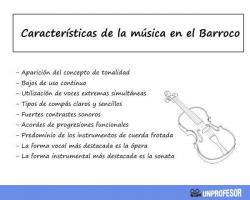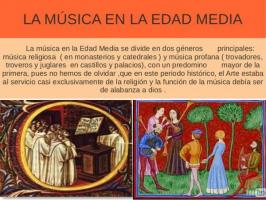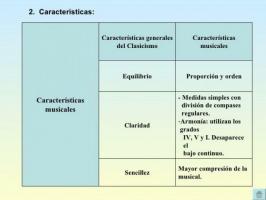MUSIC in the MIDDLE AGES and its characteristics
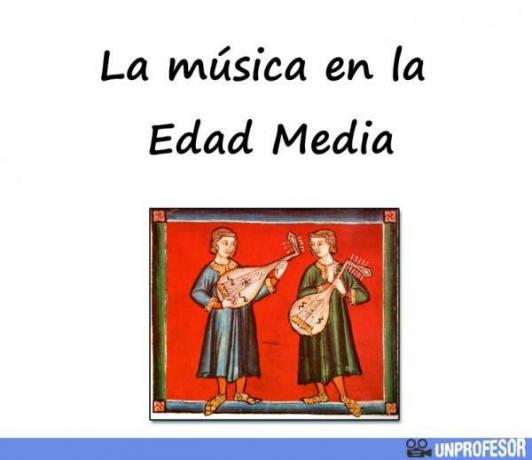
Today we have at our disposal an impressive amount and variety of music, this is probably owes to all the history that has passed and the advances that have been made little by little through the epochs. In this lesson from a TEACHER we will talk about music in the Middle Ages: summary and characteristics, to know certain interesting aspects of musical life in a totally different context from ours. A musical journey that will allow us to know the music that was made in the past and that laid the foundations of this art today.
It is important to take into account that when talking about music in the Middle Ages we are dealing with a long period, since we call history Middle Ages since the fall of the Roman Empire in the year 476 until the beginning of Renaissance in the 15th century (approximately the year 1450). It is a great music stage and, therefore, we have to know it in a deeper way to be able to understand its characteristics.
Even so we can summarize that this time power was manipulated mainly by the nobility and religion, so in In general terms, music was put at the service of one of these institutions, either in the court or in the church. Thus we can clearly divide the music of the Middle Ages into religious or profane.
Religious music
Perhaps the most relevant music is in the religious area, specifically theGregorian singing, which had texts in Latin and took place at masses and solemn festivals. Gregorian chant at this time was monodic, that is, it has a single melodic line. The monodic singing modality would remain until the eleventh century, where he began to experiment with more melodic lines, building the first bases for polyphony. Finally, it should be mentioned that it is at this time that the first musical writing system was developed. Unlike our current system, it had four lines to place the notes instead of five.
Regarding specific musical characteristics of Gregorian chant, we can mention that it was performed without accompaniment. instruments, which did not have a specific beat or rhythm, and which was played almost exclusively by voices male.
Being the Gregorian chant of exclusive liturgical use, the theme was based on its functionality during mass. The repertoire is limited to recitative texts, hymns, acclamations, psalm pieces (of the psalm), etc., some of which had responsorial dynamics on the part of the faithful.
Profane music
If we refer to profane music (not sacred, religious) we must speak of the so-called "Menestrelli". The menestrelli were troubadours and minstrels, artists who moved around the area or served as a form of entertainment during parties and banquets. The works of these interpreters had a lyrical and narrative character, that is, they recited stories sometimes accompanied by an instrument that was easy to transport and that they carried with them themselves. His songs were practically a form of poetry based on verses with varied themes that dealt with politics, morals, epic and love stories among others.
There is a differentiation between minstrels and minstrels, and it is that the troubadours They had a social status superior to that of the minstrels, these being aristocrats and composers of their own works. By contrast, play them they were merely wandering characters, sometimes former members of the clergy, who lived off the entertainment and amusement of the illiterate population. Commonly, minstrels not only chanted but resorted to other forms of entertainment such as juggling and satire (which has a mocking purpose).

Image: Slideshare
We can divide the musical forms of the Middle Ages into vowel and and instrumental.
Vowel Forms
- Organum: Liturgical piece with long notes with embellishments.
- Conductus: Semiliturgical, accompanied a character.
- Motete and Madrigal: The form that polyphony developed.
- Hoquetus: French form, 3 voices in counterpoint with a serious one.
- Canyon: Imitation of a melody shifted in time.
Instrumental Forms
Since at this time the vocal forms predominated, the instrumental forms are reduced to dances. We find terms like ballata, stampies, and skippers.
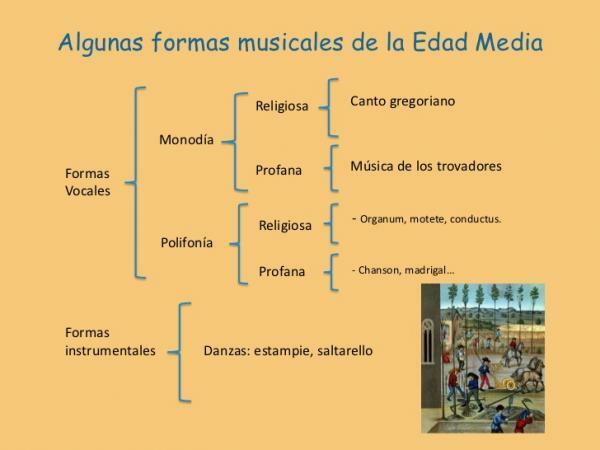
Image: Slideshare
An interesting fact is that initially we can clearly divide the use of instruments between what liturgical and profane, since in the church the only instrument allowed was the organ. Over time, the implementation of polyphony would cause more instruments to be accepted in the church with the aim of imitating human voices to accompany or replace them.
Since profane music fell on traveling musicians, their instruments had to be small and easy to transport. In addition, since the main objective was to accompany their cheers, they mainly opted for wind and string instruments, very rarely percussion. Percussion instruments were practically excluded until the Renaissance.
- String instruments: Rabel, dulcimer, fidula, harp, lute, guiterna, guitar, lyre, psaltery, monochord and organistrum, among others.
- Wind instruments: Flutes mainly, like the bombarda and the dulzaina. Of less relevance and related to the war is the families of the horns and trumpets used.
Since you know music in the Middle Ages, you can notice how much time has changed our circumstances in art and creativity and how the motives for creating are directly related to the context in the story.
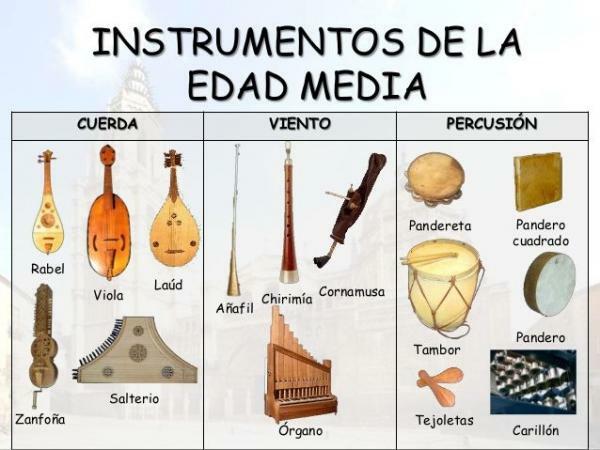
Image: Pinterest

